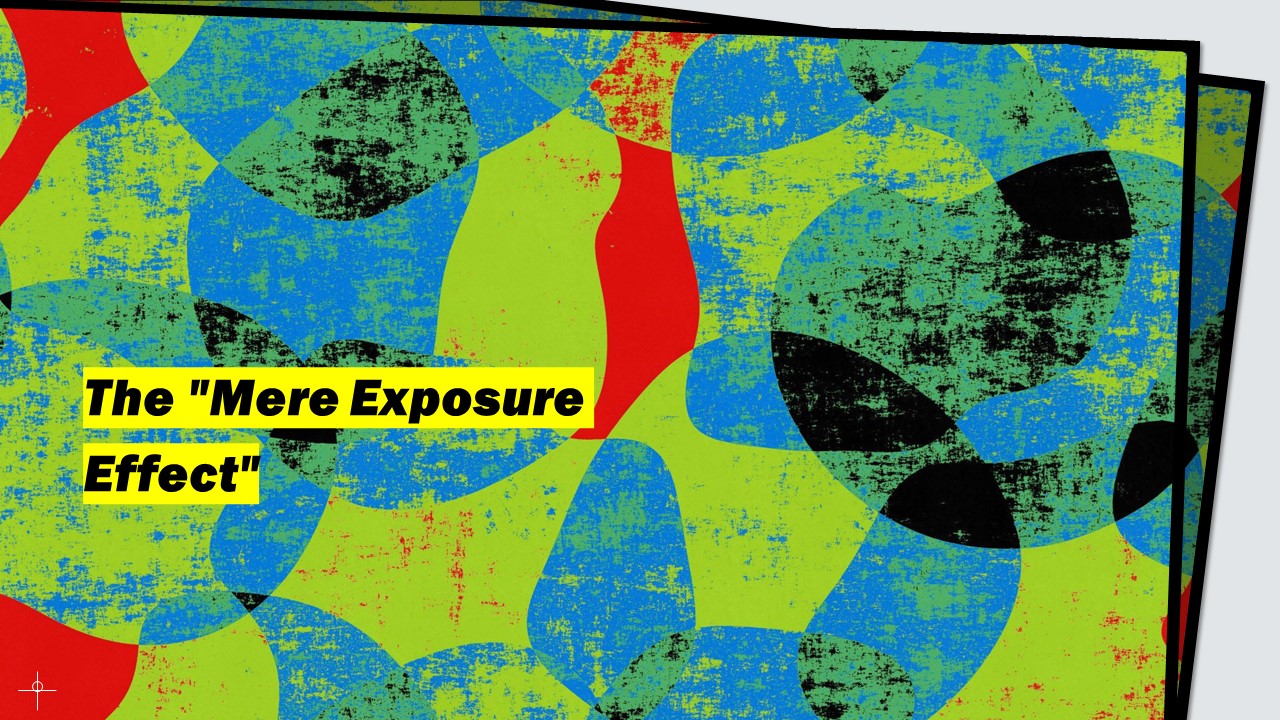Familiarity and similarity are powerful forces in our love attraction that can be influenced by genetic predisposition, imprinting, or by the “mere exposure effect.”
They all have the same psychological mechanism of prototypicality. Despite our interest in novelty, we are more likely to find a prototypical person more attractive than others. We generally tend to like something familiar in our lives. Novelty may have an unpredictable effect.
The “mere exposure effect” explains why social propinquity and residential proximity lead to positive attitudes in relationships, love, and marriage.
What Is the “Mere Exposure Effect”?
How frequently and for how long we perceive something determines our liking. We tend to like any object or person after repeated exposure. The more we see, the more we like. Such a “mere exposure effect” is well documented in social psychology (e.g., Bornstein, 1989, 1993; Harmon-Jones & Allen, 2001; Moreland & Zajonc, 1982; Saegert, Swap, & Zajonc, 1973; Zajonc, 1968).
Do Our Aesthetic Preferences Depend on Mere Exposure Effects?
The effect of “familiarity leads to liking” determines our preferences in music, films, body and facial appearance, and fashion. Complexity and novelty can be aversive. In many things, mere exposure and typicality shape our aesthetic preferences (e.g., Cutting, 2006; Martindale, Moore, & West, 1988).
This is why many people like pop music more than classical music. The pop songs are simple and, therefore, easy to love. Listening to complex and unfamiliar classical music may be aversive. Novelty and complexity can be appealing. When people listen to complex music more, they tend to understand and like it more.
The “Mere Exposure Effect” and Interpersonal Attraction
The same way the “mere exposure effect” works in our communication, affecting our interpersonal attraction (e.g., Brockner & Swap, 1976; Harrison, 1977; Moreland & Beach, 1992; Saegert, Swap, & Zajonc, 1973).
The more frequently we see (listen to, smell, or touch) a woman or man, the more we perceive them as pleasing and likeable. The “mere exposure effect” influences our favorable perception of them. However, when we see someone we dislike again and again, we dislike them even more.
The “Mere Exposure Effect” Is Ubiquitous and Pervasive yet Multifaceted
This effect works in visual, auditory, and olfactory perception (e.g., Delplanque et, 2015; Heingartner & Hall, 1974; Montoya et al., 2017).
The more we see, listen, taste, smell, and touch, the more we like—to some extent. It is also evident regardless of race and gender (Hamm, Baum, & Nikels, 1975).
The effect of exposure on liking, however, is not straight but rather curvilinear. The more we see, the more we like—up to a point. The increasing liking then reaches a plateau and then declines, giving way to disliking. When we see something or someone for a prolonged period of time, the impression can become dull, boring, and even aversive.
Here Are Some Key Practical Takeaways
Let’s also keep in mind:
The more we see, the more we love, but only if we are initially neutral or slightly positive towards him or her.
However, if we dislike him or her at first, the opposite effect occurs: the more we see, the more we dislike.
The Implications of the “Mere Exposure Effect” for Love Attraction
The “mere exposure effect” has important implications for intergroup and intercultural relations. The diverse and mixed cultural environment, rather than spatial segregation, is favorable for inter-racial, inter-ethnic, and inter-faith liking and attraction.
The “mere exposure effect” is also applicable for a better understanding of the presumed opposition between free-choice and arranged marriages. Do free-choice marriages rely on love more than arranged marriages? Not necessarily.
Proponents of free-choice marriage believe that love attraction is a prerequisite for loving relations in family, while supporters of arranged marriage think that love attraction is rather a consequence of positive relations in family. The question remains: “What is more important, initial impressions of “wow” in love, or the development of love over time as a result of the positive “mere exposure effect” of living with someone?
The “mere exposure effect” can also explain so-called “progression bias.” The psychological phenomenon of “progression bias” is a tendency of single men and women in sexual and romantic relationships to favor staying in a relationship over the course of the relationship’s progression. The longer they are in a relationship, the more they prefer to stay in that relationship.
